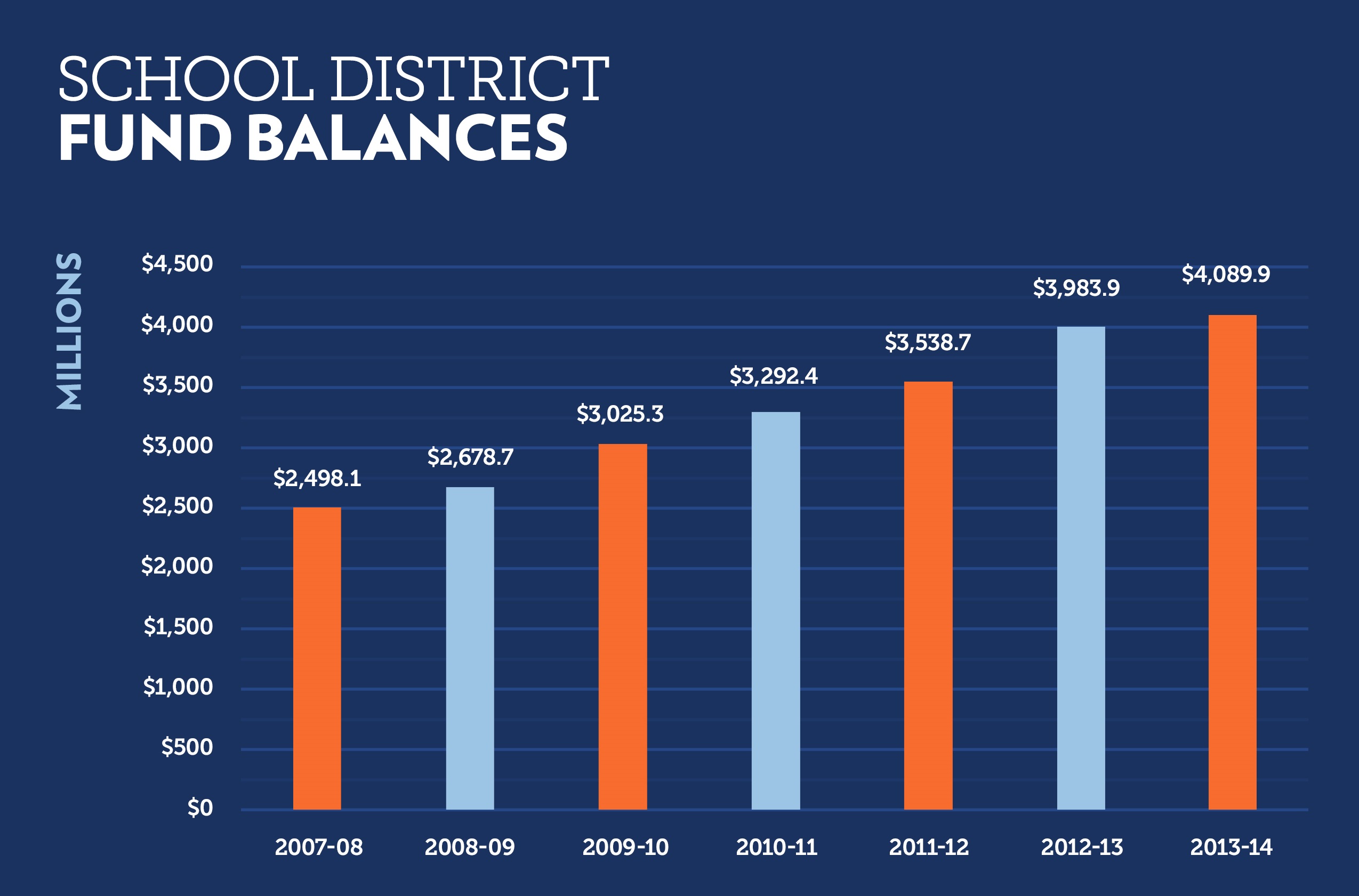Memo
Pennsylvania Education Spending Trends
Pennsylvania school districts spent $26.1 billion in 2013-14, an all-time high, according to the latest data from the Pennsylvania Department of Education. This represents a $600 million increase from 2012-13. Districts spent $15,019 per student in 2013-14, up from $14,621 in 2012-13. Total education spending steadily increased over the last five years, save for 2011-12 upon the expiration of temporary federal stimulus dollars.

State revenue to school districts reached an all-time high in 2013-14, at nearly $9.7 billion. State aid slightly dropped under Gov. Rendell in 2009-10 and was supplanted by federal stimulus funding. However, since 2010-11, state aid has consistently increased. State taxpayers contribute roughly $5,600 per student, which exceeds the national average.

School districts continue to accumulate large reserve funds, up to $4.1 billion in 2013-14—a $200 million increase. This amounts to more than 15 percent of their total revenue. [Note: these figures predate the delayed passage of the 2015-16 state budget.]

School districts pension contributions increased from $1.4 billion in 2012-13 to $1.9 billion in 2013-14. In 2008-09, districts spent $562 million on pension contributions; schools have seen more than a three-fold increase in only five years. These costs will continue rising in coming years.

Is the “State Share” of Education Spending Too Low?
Pennsylvania state aid for education exceeds $5,600 per student, which is comparable to the national average. Local revenue per student exceeds the national average by roughly $3,000.

There is an ongoing myth that Pennsylvania underfunds public schools because our “state share” is low. This is completely false.
Schools receive revenue from local, state, and federal sources. In Pennsylvania, gross local spending is extremely high, while gross state spending is right at the national average. This creates an illusion of a small state share, when gross state funding is actually at a reasonable level.
The reality is that state funding per student ranks 24th in the country at $5,580 per student. At $8,743, Pennsylvania ranks 6th in local revenue per student, $3,000 more than then national average. Indeed, our total revenue per student ranks 10th in the country, at more than $15,560 per student—again, $3,400 more than then national average.

Are Low-Income Pennsylvania Schools Underfunded?
Much has been made of comments from U.S. Education Secretary Arne Duncan regarding school funding in Pennsylvania. According to Duncan, Pennsylvania's families are “being shortchanged when it comes to state and local education funding.”
Several observers pounced on these remarks—particularly the notion that Pennsylvania per-pupil spending in low-income districts is one-third less than in wealthy districts—and used them as justification for higher taxes and greater school spending.
Is it true that Pennsylvania’s low-income students are underfunded? Let’s examine the facts.
Duncan’s comments are based on data from the National Center for Education Statistics (NCES), which organizes school districts into quartiles of family income: low poverty, low-middle poverty, high-middle poverty, and high poverty. (Note that NCES figures exclude costs for construction and debt, as well as federal funds).
In each quartile—even among high poverty districts—Pennsylvania exceeds the national average in spending per student. Put another way: the vast majority of schools in the commonwealth are funded higher than the national average.

The key takeaway from NCES is that affluent Pennsylvania districts raise enormous levels of local taxes to fund their public schools. Hypothetically, the discrepancy in district level spending could be eliminated by capping the local effort in high-income districts. This would make Pennsylvania’s schools appear more “equal,” but it wouldn’t result in better academic performance—nor would it direct more funding to low-income districts.
